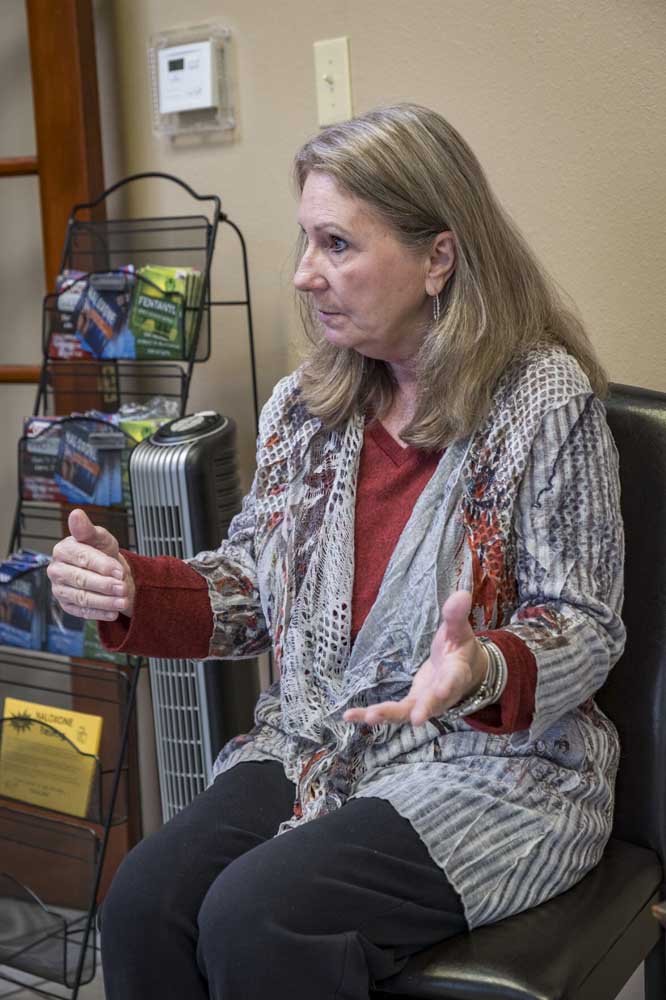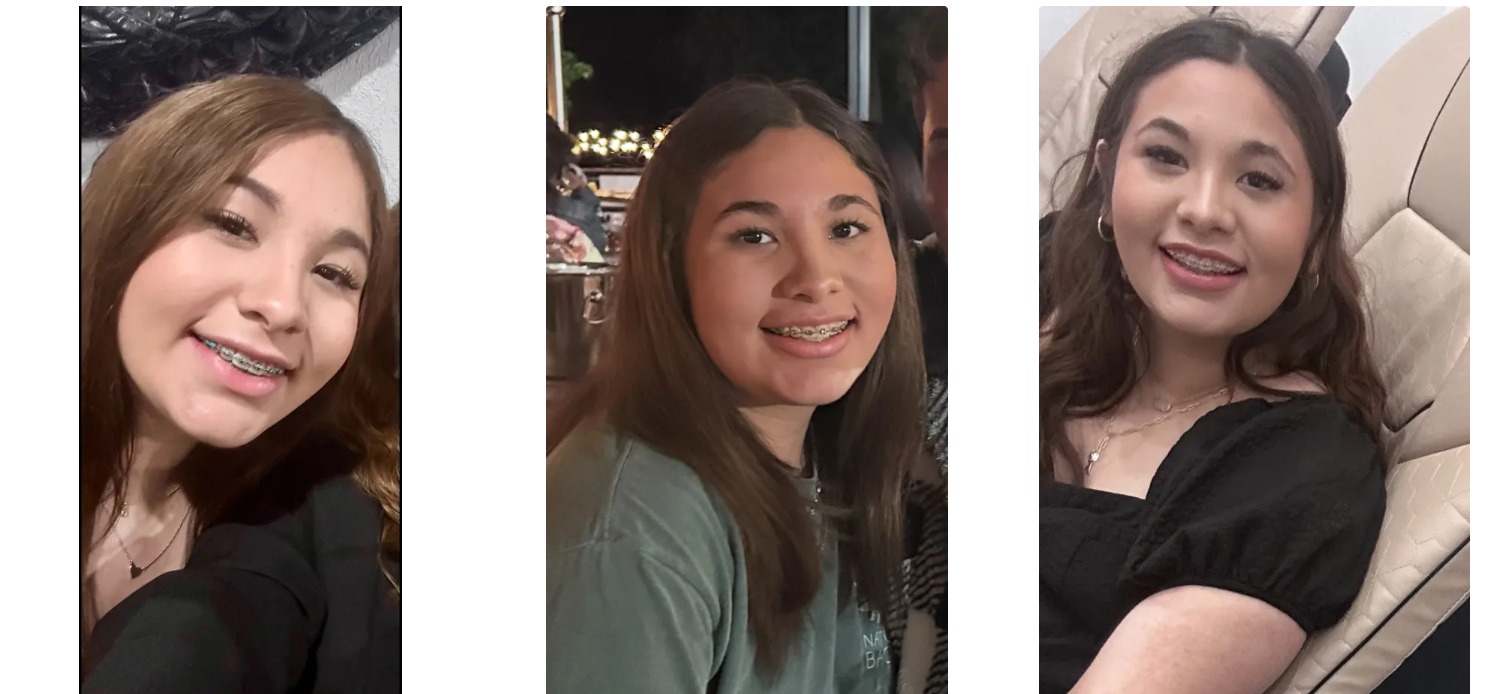Overdose-reversing drug available for free throughout East Texas: Here’s what to know
Published 5:35 am Monday, December 9, 2024

- Denise Day, director of the East Texas Council on Alcoholism and Drug Abuse's naloxone distribution and training program, talks about the naloxone program Tuesday. (Les Hassell/Longview News-Journal Photo)
Community members can obtain free doses of an opioid overdose-reversing medication and learn how to use it thanks to the East Texas Council on Alcoholism and Drug Abuse.
The council is distributing naloxone, a nasal spray credited with saving the lives of people who’ve ingested the fatal synthetic opioid fentanyl. It’s hailed as the easiest and best way to reverse an overdose, and it’s sometimes referred to by the brand name Narcan.
Trending
“Our job is to get naloxone in the hands of as many people in Texas as we can,” said Denise Day, the program’s administrator. “No one should have to purchase it to try to help save a life.”
The council is a regional naloxone distribution hub and is tasked with giving the drug to people throughout 35 East Texas counties all the way from Texarkana to Beaumont — including in Gregg, Smith, Rusk, Upshur, Harrison and Marion counties. Since the program began this summer, more than 5,500 doses have been distributed.
The council offers in-person naloxone training to individuals, businesses, schools, law enforcement agencies and more. The council also distributes educational literature about fentanyl and naloxone. More than 2,500 participants have been trained so far, Day said.
People can call the council at (903) 470-3045 or email dday@etcada.com to request naloxone and training.
After placing an order for naloxone, people and businesses can pick it at the council’s office, 708 Glencrest Lane in Longview. If they’re unable to do so, Day will deliver it in-person and train the person requesting it how to use it.
The program is funded through a grant from the Be Well Texas program at UT Health San Antonio, which offers addiction recovery services.
Trending
About the fentanyl epidemic
America is facing a fentanyl epidemic, with the number of opioid-involved deaths increasing since 1999, according to the Centers for Disease Control and Prevention. Nearly 108,000 Americans died of a drug overdose in 2022, and roughly 76% of those deaths were connected to opioids.
When manufactured and prescribed legally, fentanyl is used to treat chronic, severe pain and pain after surgeries. But the drug also is manufactured illegally and is a cause of overdose-related deaths.
Fentanyl is approximately 100 times stronger than morphine and 50 times stronger than heroin; even 2 milligrams of the drug can be fatal, according to the U.S. Drug Enforcement Agency. China remains the primary source of fentanyl, and much of America’s illicit fentanyl is smuggled into the country through the southern border, the Associated Press reported.
The epidemic has affected people of all ages. Sometimes, fentanyl is disguised as a fake pill made to look like prescription drugs such as Xanax, Percocet, Vicodin, Oxycodone and Adderall — drugs that people might try to purchase on social media to get relief from anxiety, gain focus studying and more.
Illicit drugs — including marijuana, heroin and other drugs — have been laced with fentanyl. Older people could have an overdose, too, if they’ve got a fentanyl prescription but make a mistake and take too much of it, Day said.
“Texas is losing a lot of people, as well as America,” she said.
Responding to an overdose
Responding to an opioid overdose quickly is vital. A person who is overdosing on fentanyl could stop breathing. The signs of an overdose could include: small, constricted “pinpoint pupils;” falling asleep or losing consciousness; having a limp body; having slow or shallow breathing; and making choking or gurgling noises, according to a pamphlet distributed by ETCADA.
If someone is experiencing an overdose, people should call 911 immediately and administer naloxone before paramedics arrive.
Naloxone is simple to use. It works like a nasal spray for allergies. It comes in boxes containing two doses — two separate nasal spray devices. To administer naloxone, a person should:
Hold the spray device with two fingers on either side of the nozzle and place his or her thumb on the plunger on the bottom of the device;
Tilt the victim’s head back; then the person administering naloxone should put one of his or her hands under the person’s neck to provide support;
Gently stick the nozzle tip into one of the victim’s nostrils and press the plunger firmly;
Watch the victim closely, and if the victim doesn’t respond within two minutes, give the second dose of naloxone;
Roll the victim onto his or her side to prevent choking.
There’s no harm in administering naloxone to anybody, even if the person isn’t experiencing an overdose. The drug is inert in a body where fentanyl isn’t present, Day said.
Under Texas’ so-called “good Samaritan” law, people cannot be charged with a crime for administering or failing to administer naloxone to someone in “good faith and with reasonable care,” according to the Greenhouse Treatment Center.
Training ‘as many people as we can’
ETCADA provides recovery support services and aims to reduce substance abuse.
People across Texas can order naloxone by visiting naloxonetexas.com/. The regional distribution hub where they live will fulfill the order.
Day is looking for an East Texas business that is willing to place a naloxone vending machine on its property. The machine distributes the nasal spray devices in boxes.
“We need to train as many people as we can to help save these kids’ lives,” Day said. “It’s very, very important that this needs to be out in every household.”
The Texas Health and Human Services Department’s “Fentanyl: One Pill Kills” awareness campaign educates people about the dangers of fentanyl. To learn more, visit tinyurl.com/TXonepillkills.







